How to set Winegard RTS-40B TV Antenna for new provider?
- CConnor RichardsAug 4, 2025
To set your Winegard TV antenna for a new provider, remove the dome and set the switches to the correct provider. Refer to page 3 for switch settings.
How to set Winegard RTS-40B TV Antenna for new provider?
To set your Winegard TV antenna for a new provider, remove the dome and set the switches to the correct provider. Refer to page 3 for switch settings.
Why Winegard TV Antenna does not move?
If your Winegard TV antenna doesn't attempt to find a satellite or never moves, verify that the power source is providing +12VDC to the antenna. Also, ensure that the quick disconnect power connector is fully seated and locked into the quick disconnect socket.
What to do if my Winegard TV Antenna receiver is locked up?
If your receiver seems frozen and isn't responding, DIRECTV users can reboot by pressing the red reset button inside the small door on the receiver, or unplug the receiver from the AC outlet for 20 seconds and plug it back in. DISH users can reboot by pressing and holding the power button on the receiver for 15 seconds and then releasing it, or unplugging the receiver from the AC outlet for 20 seconds and plugging it back in.
Why Winegard RTS-40B TV Antenna locks on signal but no picture?
If your Winegard TV antenna appears to lock onto a signal, but your receiver isn't showing a picture or signal reading, first check that the switch settings are correct for your provider. DIRECTV users should ensure the antenna type is set to either 3 LNB “18X20” or 2 LNB oval. DISH users should verify the “Check Switch” is set to SW64, and Bell users should verify it's set to SW42. Note that a new receiver might initially show an “Unknown Check Switch”, but the antenna will still search, though it won't toggle to alternate satellites.
What to do if Winegard RTS-40B continuously searches?
If your Winegard TV antenna continuously searches without acquiring any satellites, check the main coax cable to ensure it's connected to the “Satellite In” port on the back of the receiver. Also, make sure all coax cables are properly terminated and that there are no loose connections. Ensure that the southern sky is clear of obstructions like trees, buildings, or overpasses. Rain, snow, or excessive dew on the dome can also interrupt the signal, so brush off any snow or dew. If heavy rain or snowfall is blocking the signal, you may need to wait for the weather to clear.
Why am I not getting all DISH channels on my Winegard RTS-40B TV Antenna?
If you're not getting all the DISH channels you've subscribed to, go to the Check Switch Menu on your receiver and make sure it's set for SW64. Both even and odd transponders on satellite 110°, 119°, and 129° should be listed. Keep in mind that local programming might not be available outside of your local coverage area.
Why Winegard RTS-40B TV Antenna finds alternate but not primary satellite?
To resolve this issue with DIRECTV on your Winegard TV antenna, make sure that the switches on the electronics control box are set for DIRECTV. You can find these switches on the electronics box under the dome; see page 3.
Installation must be performed only in dry conditions to prevent water damage and warranty issues.
Choose a level roof location and ensure it is clear of obstructions for optimal satellite reception.
Maintain adequate clearance from other rooftop equipment to avoid signal obstruction.
Align the dome's centerline with the vehicle's centerline for correct positioning.
Ensure a minimum 12-inch clearance from the roof edge to the rear corner of each base foot.
Position the unit permanently and mark the base foot locations for drilling.
Clean the marked roof area for base feet attachment, preserving the marked outlines.
Apply approved sealant to the marked areas before attaching the base feet.
Secure each base foot using three screws, ensuring proper attachment.
Connect the power cable to the quick disconnect socket on the antenna unit.
Plan the entry point for power and coax cables into the vehicle for a clean installation.
Connect the primary receiver's 'Satellite In' port to the antenna's main port with a coax cable.
Install the cable entry plate over the cable hole to seal the entry point.
Position the dome so its decals face away from the vehicle's centerline.
Align the screw holes on the dome with the corresponding holes on the antenna base.
Select a suitable location for mounting the power On/Off switch.
Ensure the power switch is in the 'Off' position before proceeding with wiring.
Connect vehicle and antenna ground wires to the appropriate terminals.
Connect the antenna's red wire to the small red flag connector on the switch.
Connect the vehicle's +12V power wire to a small red flag connector.
Connect a small red flag connector to the isolated spade terminal on the switch.
Disconnect the coax cable from the receiver's 'Sat In' port before starting setup.
Access System Setup via the receiver's Menu and option 6.
Navigate to and select the 'Installation' option.
Choose the 'Point Dish' option from the installation menu.
Navigate to the 'Check Switch' option.
Initiate the satellite acquisition test.
Reconnect the coax cable to the receiver's 'Sat In' port after tests.
Wait 3-4 minutes for the antenna to acquire satellite signals.
Verify that 'SuperDISH' or 'Alternate' do not show checkmarks.
Perform the 'Test' function again to confirm settings.
The system will now configure the SW64 switch for DISH receivers.
Confirm SW64 is installed; the antenna is now ready for use.
Navigate the receiver menu to 'Parental, Fav's & Setup'.
Choose the 'System Setup' option from the menu.
Locate the 'Satellite Menu' and then select 'Satellite Setup'.
Select the appropriate LNB or satellite configuration.
Power on the antenna and wait for satellite signal acquisition.
Check 'Signal Strength' in the menu before returning to the setup screen.
Proceed to the next step by pressing 'Continue'.
Installation status may show errors (X); this is normal.
Advance to the next screen by selecting 'Continue'.
The program guide data will be downloaded.
Press 'Continue' once the program guide download reaches 100%.
Receiver performs Data Feed and Guide Feed tests.
Choose 'Setup Remote Later' for remote configuration.
Final step to begin watching DIRECTV programming.
Power on the receiver and TV; ensure the antenna is connected to a 120VAC receiver.
Confirm that receiver menu screens are visible on the television.
Switch on the antenna; the dish will move and rotate upon startup.
Antenna pauses on signals during search to identify satellites.
Refer to the 'Troubleshooting' section for no-signal issues.
In-motion systems track satellites after verification.
Use the on-screen guide for channel selection instead of channel surfing.
Verify power source and quick disconnect connection for antenna movement issues.
Check coax connections, cable termination, and sky clarity for continuous search problems.
Ensure DIRECTV switches are set correctly for primary satellite acquisition.
Verify receiver's 'Check Switch' setting is SW64 for all DISH channels.
Remove dome and adjust switches for the new satellite provider.
Reboot receiver by pressing reset button or unplugging from AC power.
Verify switch settings and receiver antenna type (e.g., 3-LNB) for signal display issues.
Installation must be performed only in dry conditions to prevent water damage and warranty issues.
Choose a level roof location and ensure it is clear of obstructions for optimal satellite reception.
Maintain adequate clearance from other rooftop equipment to avoid signal obstruction.
Align the dome's centerline with the vehicle's centerline for correct positioning.
Ensure a minimum 12-inch clearance from the roof edge to the rear corner of each base foot.
Position the unit permanently and mark the base foot locations for drilling.
Clean the marked roof area for base feet attachment, preserving the marked outlines.
Apply approved sealant to the marked areas before attaching the base feet.
Secure each base foot using three screws, ensuring proper attachment.
Connect the power cable to the quick disconnect socket on the antenna unit.
Plan the entry point for power and coax cables into the vehicle for a clean installation.
Connect the primary receiver's 'Satellite In' port to the antenna's main port with a coax cable.
Install the cable entry plate over the cable hole to seal the entry point.
Position the dome so its decals face away from the vehicle's centerline.
Align the screw holes on the dome with the corresponding holes on the antenna base.
Select a suitable location for mounting the power On/Off switch.
Ensure the power switch is in the 'Off' position before proceeding with wiring.
Connect vehicle and antenna ground wires to the appropriate terminals.
Connect the antenna's red wire to the small red flag connector on the switch.
Connect the vehicle's +12V power wire to a small red flag connector.
Connect a small red flag connector to the isolated spade terminal on the switch.
Disconnect the coax cable from the receiver's 'Sat In' port before starting setup.
Access System Setup via the receiver's Menu and option 6.
Navigate to and select the 'Installation' option.
Choose the 'Point Dish' option from the installation menu.
Navigate to the 'Check Switch' option.
Initiate the satellite acquisition test.
Reconnect the coax cable to the receiver's 'Sat In' port after tests.
Wait 3-4 minutes for the antenna to acquire satellite signals.
Verify that 'SuperDISH' or 'Alternate' do not show checkmarks.
Perform the 'Test' function again to confirm settings.
The system will now configure the SW64 switch for DISH receivers.
Confirm SW64 is installed; the antenna is now ready for use.
Navigate the receiver menu to 'Parental, Fav's & Setup'.
Choose the 'System Setup' option from the menu.
Locate the 'Satellite Menu' and then select 'Satellite Setup'.
Select the appropriate LNB or satellite configuration.
Power on the antenna and wait for satellite signal acquisition.
Check 'Signal Strength' in the menu before returning to the setup screen.
Proceed to the next step by pressing 'Continue'.
Installation status may show errors (X); this is normal.
Advance to the next screen by selecting 'Continue'.
The program guide data will be downloaded.
Press 'Continue' once the program guide download reaches 100%.
Receiver performs Data Feed and Guide Feed tests.
Choose 'Setup Remote Later' for remote configuration.
Final step to begin watching DIRECTV programming.
Power on the receiver and TV; ensure the antenna is connected to a 120VAC receiver.
Confirm that receiver menu screens are visible on the television.
Switch on the antenna; the dish will move and rotate upon startup.
Antenna pauses on signals during search to identify satellites.
Refer to the 'Troubleshooting' section for no-signal issues.
In-motion systems track satellites after verification.
Use the on-screen guide for channel selection instead of channel surfing.
Verify power source and quick disconnect connection for antenna movement issues.
Check coax connections, cable termination, and sky clarity for continuous search problems.
Ensure DIRECTV switches are set correctly for primary satellite acquisition.
Verify receiver's 'Check Switch' setting is SW64 for all DISH channels.
Remove dome and adjust switches for the new satellite provider.
Reboot receiver by pressing reset button or unplugging from AC power.
Verify switch settings and receiver antenna type (e.g., 3-LNB) for signal display issues.
| Frequency Range | VHF/UHF |
|---|---|
| Max Range | 40 miles |
| Impedance | 75 Ohms |
| Connector Type | F-type |
| Polarization | Horizontal |
| Mounting Type | Mast |

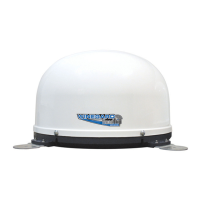
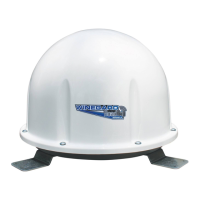
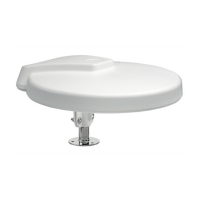
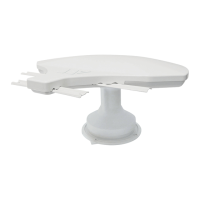


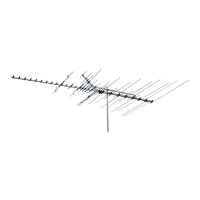
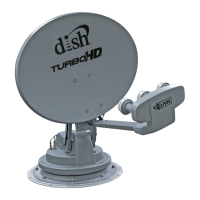
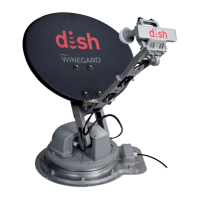
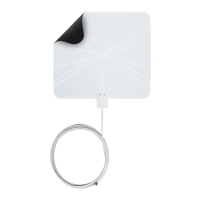
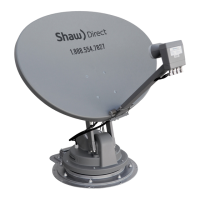
